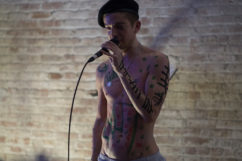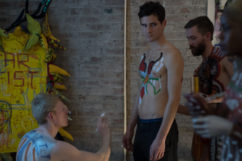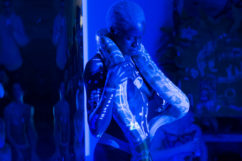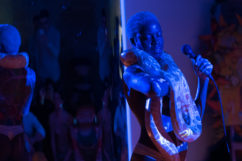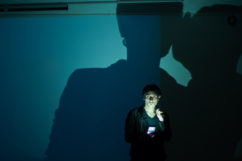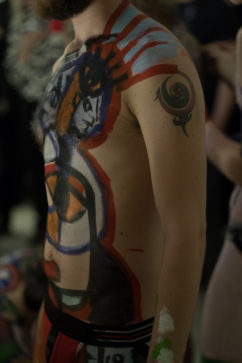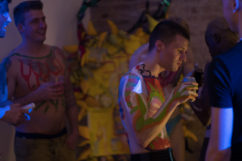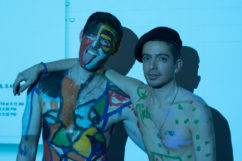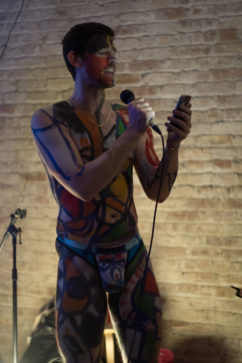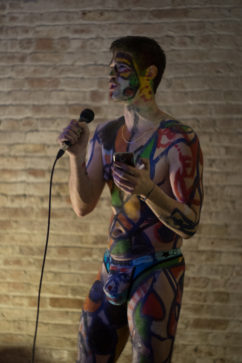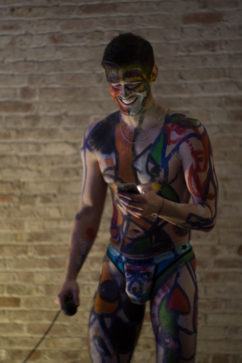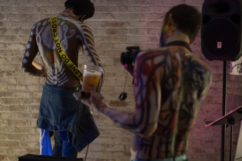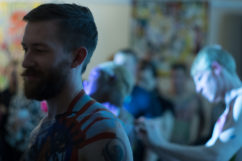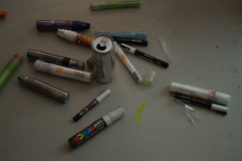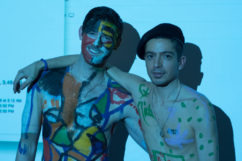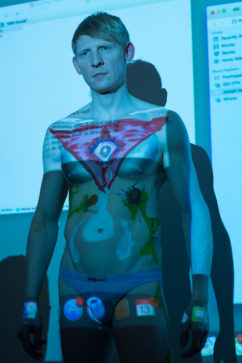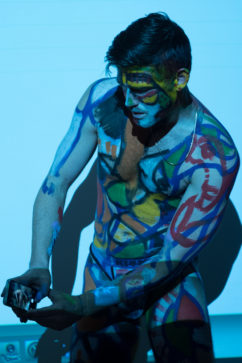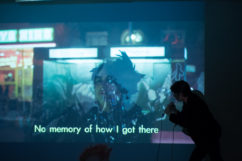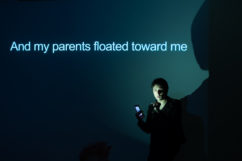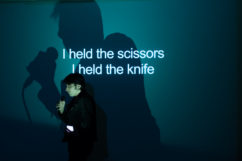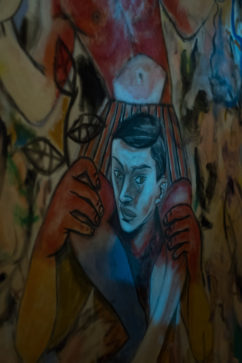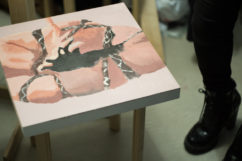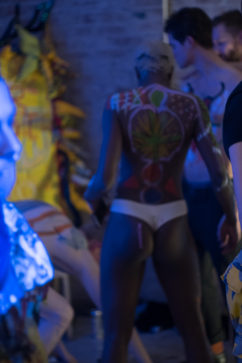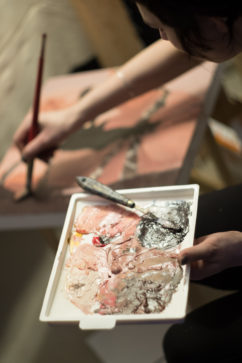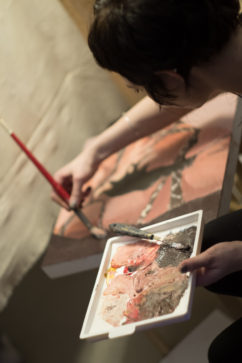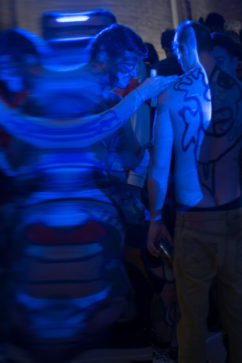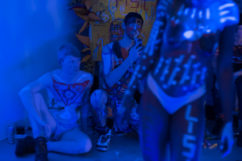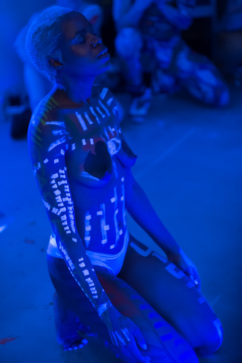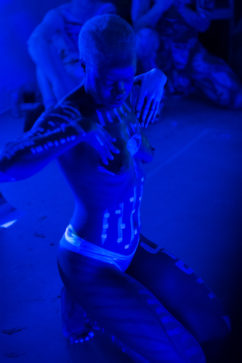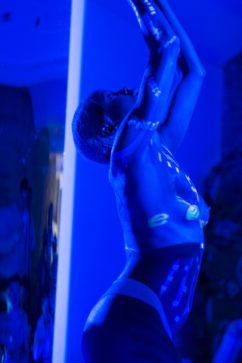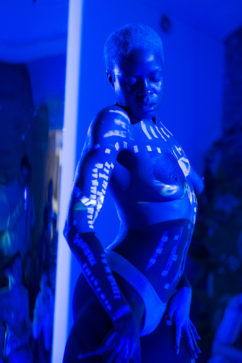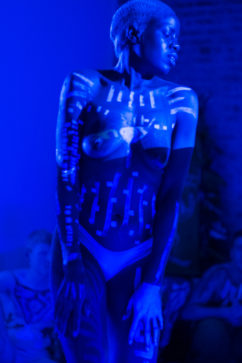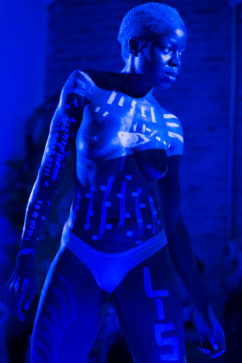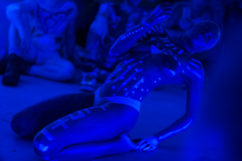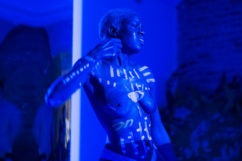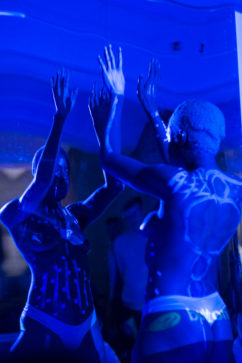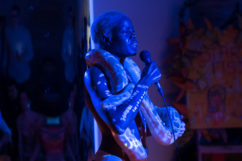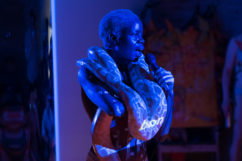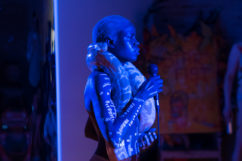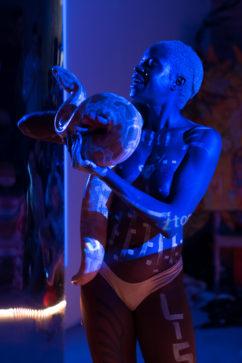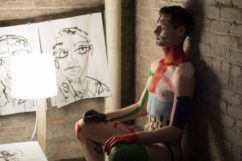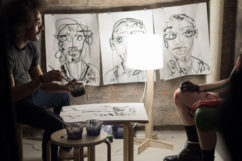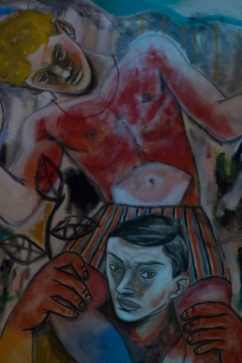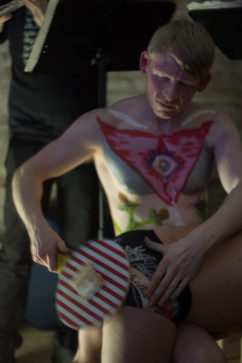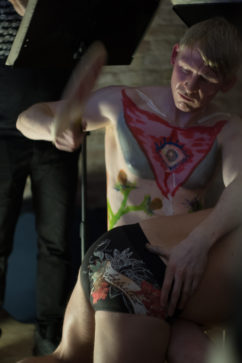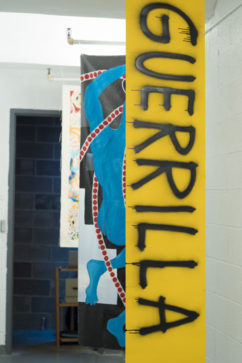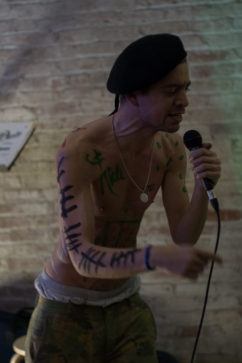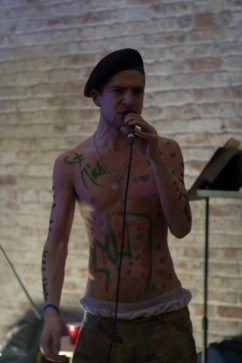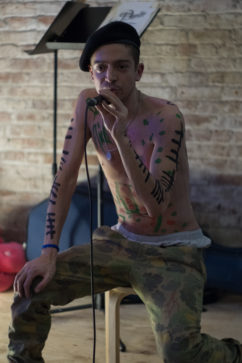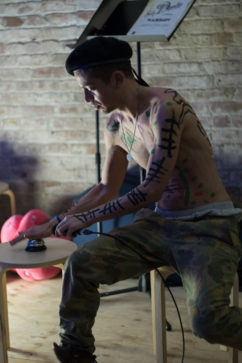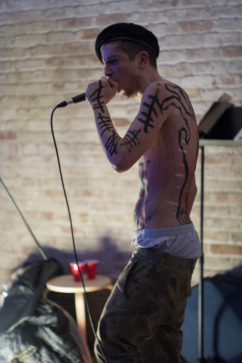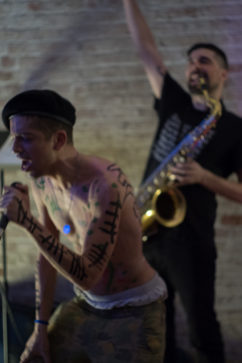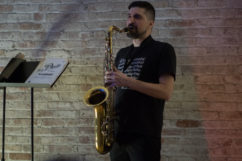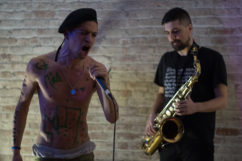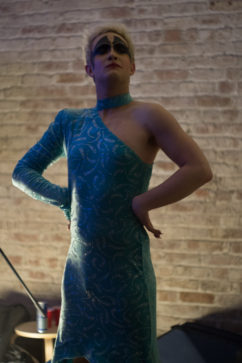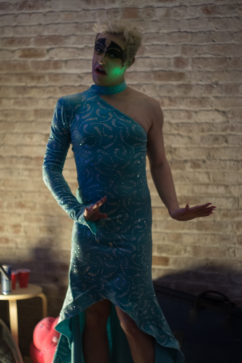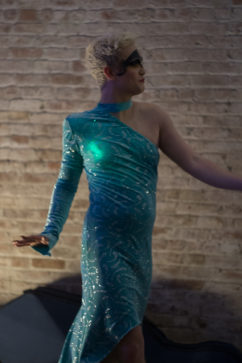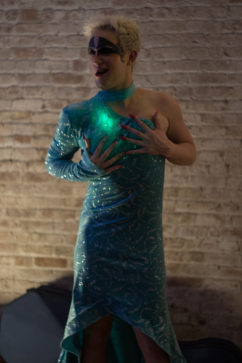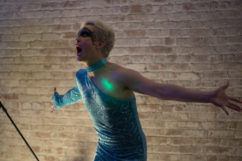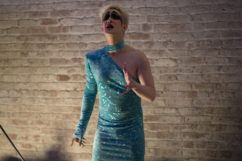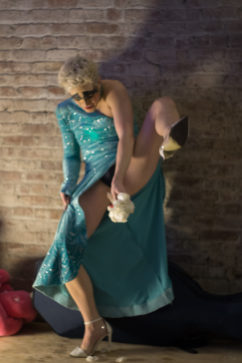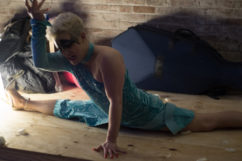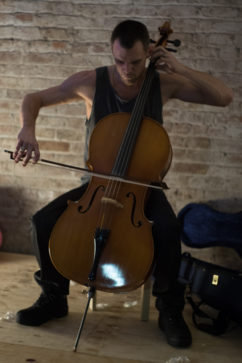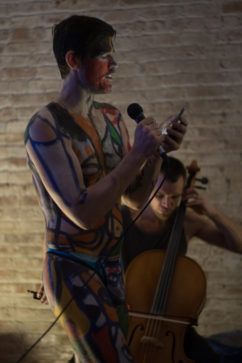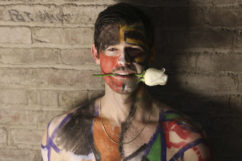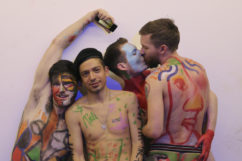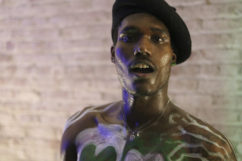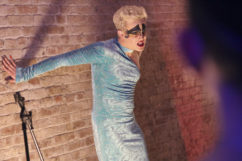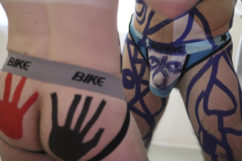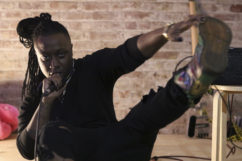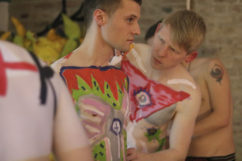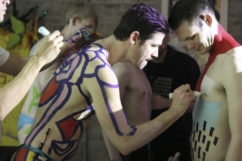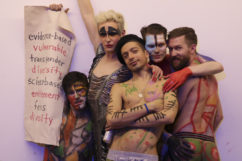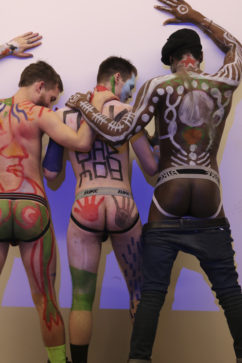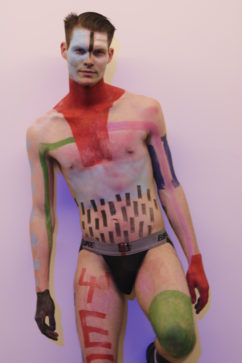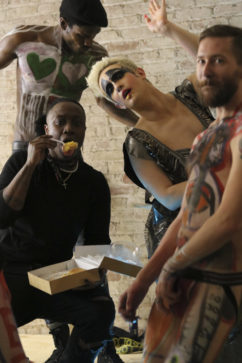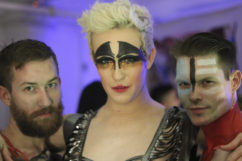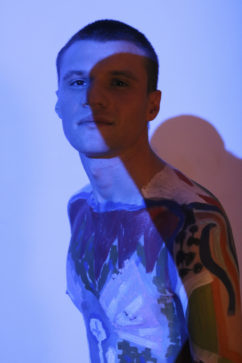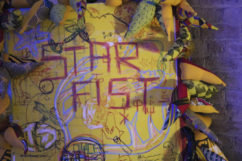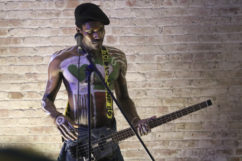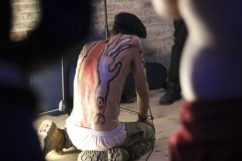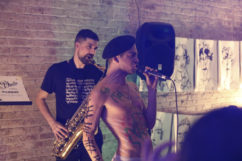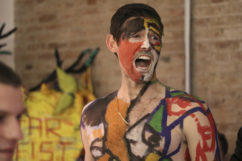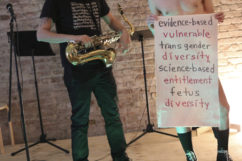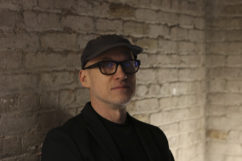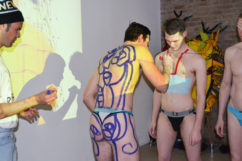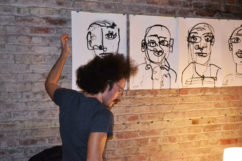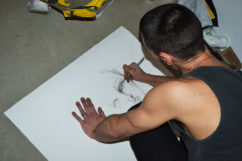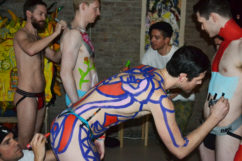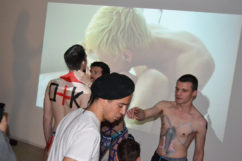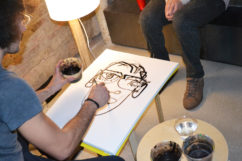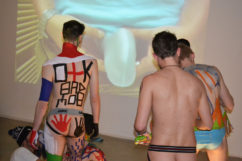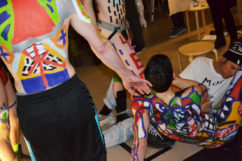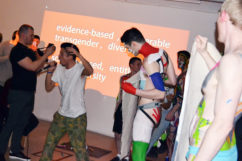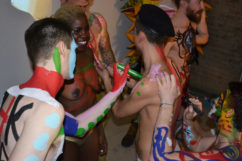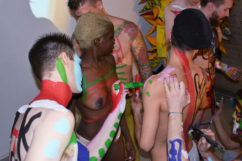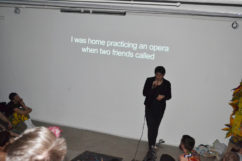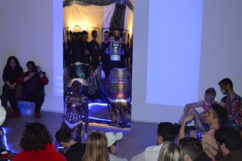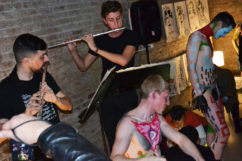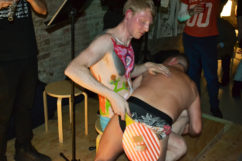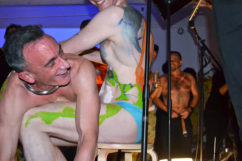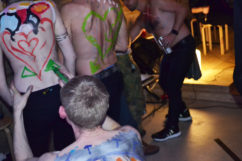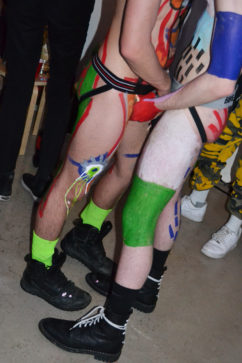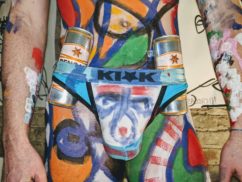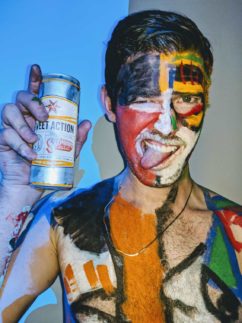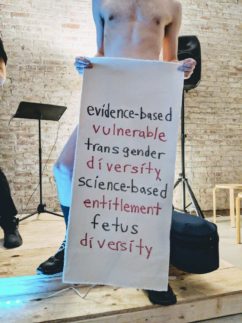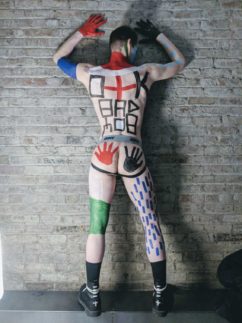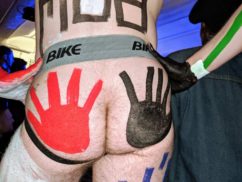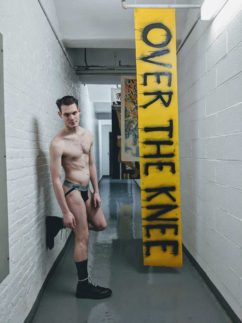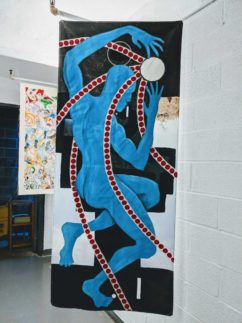Monday 01.15.18
OTK2: organized by Gio Black Peter and Brian Kenny
The multimedia event took place at American Medium in NYC
Thursday 01.11.18
Over the Knee 2
Gio Black Peter and Brian Kenny's multi-media creative lab is back with performance, film, dance, art and more.
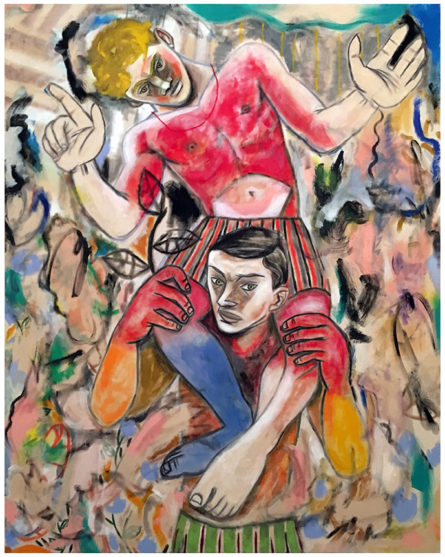
Gio Black Peter and Brian Kenny — longtime friends, creative collaborators and GAYLETTER contributors — met while bartending. The two got popular in the downtown scene with their big old art party “Over the Knee.” They’ve brought “OTK” back for another installment, and we sent them a few questions to learn more about the show.
Why is it called OTK2? Brian & Gio: OTK is an acronym for “Over The Knee.” This is our second Over The Knee event, so it’s OTK2! The phrase “Over the Knee” is a reference to spanking. We both like this action phrase because spanking is about rule-breaking, administering discipline/taking action, sex (both playful and serious) and irreverence, all which are important concepts that apply to our creative practices. The night is our way our way to show resistance!
How did OTK2 come together? We started this collaboration back in the day when we met as bartenders in a now defunct downtown NYC sleaze bar. Since we were both artists it was only natural for us to incorporate our creativity into our nightlife. We’d go crazy and jump all over the bar, draw on the walls, draw on each other. The go-go dancers would get naked or only wear trash bags and dance with each other. [Gio] would sing, [Brian] would pole dance and we’d spank people for free Jagermeister shots. We made beautiful paddles that we covered in our drawings. Eventually word got out and our party became a hit. …

Tuesday 01.09.18
Kathleen White and Nan Goldin
Two separate shows reflect on AIDS, community and compassion.
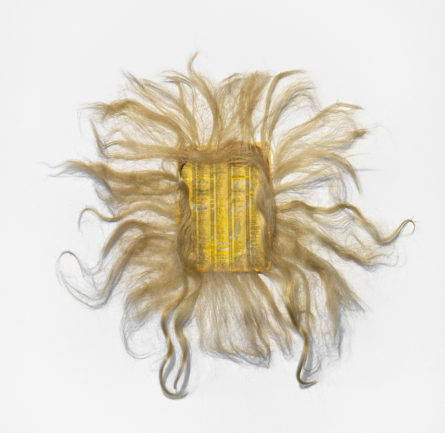
Downtown Manhattan in the latter part of the 20th century is something of lore if you grew up interested in the arts, alternative rock, counter-culture or battling corrupt government. Nan Goldin was no stranger to 1980s New York City’s dangerous and drug fueled streets. She moved to New York following her graduation from the School of the Museum of Fine Arts in 1978 and quickly began photographing the burgeoning arts scene. Goldin befriended and photographed the many vibrant characters that populated the Bowery neighborhood. Among those documented in her work was Kathleen White.
In dual shows up at Pioneer Works, curator David Everitt Howe — along with White’s partner Rafael Sánchez — returns Spirits of Manhattan to the gallery setting in tandem with Nan Goldin: Kathleen, which features five portraits of White taken by Goldin in the 90s.
Spirits of Manhattan was first shown in 1999’s Shy, an exhibition curated by Goldin that featured works from some of those she was photographing at the time . In what Pioneer Works calls a “posthumous return to White’s work” (the artist lost her battle with cancer in 2014), the two separate but interconnected exhibitions revolve around the two artists; “formidable colleagues, they were mutually affected by the AIDS crisis then unfolding in the 1980s and 90s.”
Wig suitcase, c. 1990s, suitcase, wigs, dimensions variable.
Flloyd, 1991, wig hair, hair, watercolor, acrylic, glitter, pencil, and eye pencil on phone book page, dimensions variable. …

Thursday 12.14.17
GAYLETTER’s TRIP TO KUSAMA
On a private tour, Festival of Life took our breath away
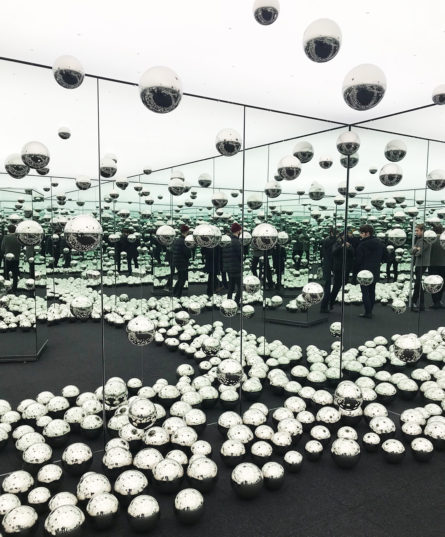
Search “#Kusama” on Instagram and notice how many polka-dotted mirror selfies clog the feed. You’ve probably seen these playful rooms online before. When seen digitally, the rooms that appear to extend for miles look like elaborate set designs. People’s photos are a curiosity all their own, and knowledge of their context or not, Kusama’s work looks like art made with the millennial in mind.
Yayoi Kusama’s work is worth millions of dollars. That should come as no surprise. Aside from being one of the most widely shared and known working artists today, Kusama has been shocking crowds since the 1960s when Andy Warhol and his factory were camping up the line between the commercial and the gallery. Kusama was right there inside the movement, goofing up the seriousness of art-culture and debuting work in a handful of mediums including painting, performance and sculpture.
In 1965 the then-young artist premiered “Infinity Mirror Room: Phalli’s Field.” It included hundreds of soft, phallic forms in a room under 300 square-feet that enveloped the viewer in a kind of psychosexual encounter; one that commanded attention due in part to the total copiousness of it. Since then, Kusama has debuted several more of her now world-famous infinity rooms and they have since been exhibited in galleries and museums all over the world, not to mention broadcasted on social media ad nauseam.
Yayoi Kusama: Festival of Life at David Zwirner has been drawing crowds since it opened on November 2nd. Including sixty-six paintings from the iconic My Eternal Soul series, plus the premiere of two new infinity rooms and three new large-scale flower sculptures, the show reconstitutes the artist’s prolific nature and invites art-lovers and social media bloggers alike to the gallery where lines to see her incomparable work have extended into several hour wait periods. …

Monday 12.04.17
SPANISH HARLEM, A PHOTO BOOK
A review of Joseph Rodriguez's recent documentary photo book Spanish Harlem, El Barrio in the '80s.
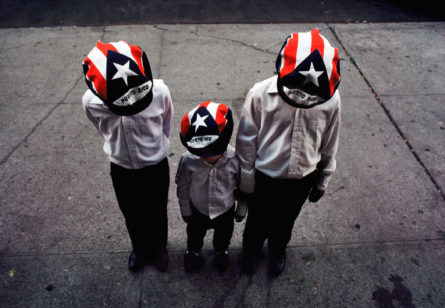
Here at the GAYLETTER office, we’re surrounded by photo books. Some are fine art, some documentary. Some portraiture, some erotic. A few of the books are by photographers we’re friends with or have worked alongside, while others we’ve received as gifts or to review. The newest book in the GL library is Spanish Harlem by Brooklyn-raised photographer Joseph Rodriguez.
Before I dive into my glowing review of the book, I’ll pass on a few words from the press release to give my thoughts some context.
“Spanish Harlem, New York’s oldest barrio, is the U.S. mecca where Puerto Ricans first established themselves in the 1940s. One of America’s most vital centers of Latino culture, Spanish Harlem is home to 125,000 people, half of whom are Latino. Shot in the mid-to-late 80s, Joseph Rodriguez’s superb photographs bring us into the core of the neighborhood, capturing a spirit of a people that survives despite the ravages of poverty, and more recently, the threat of gentrification and displacement. In a now-distant landscape littered with abandoned buildings, ominous alleyways, and the plague of addiction, the residents of Spanish Harlem persevered with flamboyant style and gritty self-reliance.
“The heart of the work comes from Rodriguez’s intimacy and access. The trust and familiarity he built with his subjects — repeated visits with no camera, then no photographing, then little by little, a peek here, a shot there — allowed him to transcend surface level sheen and exploitation to capture images that reveal the essence of the neighborhood and of the era. …

Thursday 11.30.17
DAVID HOCKNEY AT THE MET
Queer as he was, the painter shocks, educates and quiets in a namesake show.
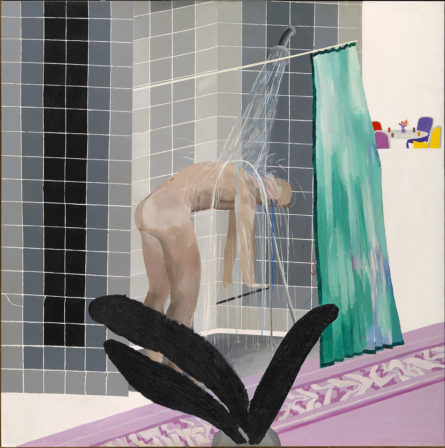
When thinking “gay artist,” David Hockney is not the first name that comes to mind. Known for his figurative works and naturalist style, the artist — now 80 years-old — has crisscrossed various mediums in hot pursuit of transposing reality into realism. “David Hockney,” now on view at the Metropolitan Museum of Art, is a retrospective look at the artist’s career now into its 60th year.
Ian Alteveer, head curator, begins with Hockney’s early works made during his homosexual awakening while studying at the Royal College of Art. London, at the time, was about to become a hot bed for mod culture, and with the decriminalization of homosexuality still five years away, Hockney’s early works celebrate a latent politicization of his blatant sexuality. “Between 1960 and 1962 Hockney produced a body of work dealing explicitly with his homosexuality. He called these pictures ‘propaganda’ for gay desire, and they are full of self-referential codes, literary references and stylistic variation.” There is a foreboding joy on each of these canvases that include Walt Whitman’s poetry and obviously sexual geometry. “Cleaning Teeth, Early Evening (10PM) W11” (1962) illustrates two biomorphic figures (sourced from his discovery of graffiti-like scrawls found in London Underground stations) with Colgate toothpaste for cocks and at the disposal of one another’s mouths. One can’t help but think that Hockney, queer as he was, got satisfaction out of a particular shock value, not to mention inadvertently scandalizing others by adding the initials of his school crushes beside these queer figures. …

Tuesday 11.14.17
We Can’t Make You Younger
Mixing painting with the written word 'We Can't Make You Younger' shines new light on the queer experience.
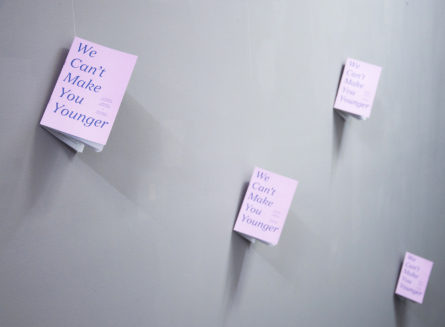
Manuel Solano is a multidisciplinary artist whose first solo show at Museo Carrillo Gil opened last year, in Mexico City. The exhibition consisted of mostly paintings from their series Blind Transgender with AIDS, made shortly after he lost his eyesight in 2014 due to HIV-related complications. (Solano has identified as both transgender and nonbinary, but uses masculine pronouns). “The impression I have is that I was left for dead,” he told writer Benoît Loiseau in GAYLETTER Issue 7.
“We Can’t Make You Younger” marks the first collaboration between the Mexico City writer and artist. The collection includes three short stories written by Loiseau with accompanying artwork by Solano who was recently selected to show in the New Museum’s 2018 Triennial. The stories are simply and directly written, and when matched with Solano’s gestural, immediate painting style, create a collection that is stunningly powerful, and quietly haunting.
“The stories deal with fundamental issues, including loss, sexuality, romantic attachment, and so called spirituality,” writes Chris Sharp in the foreword. Simply put, this collaboration is beautiful synergy of the queer and the relatable: striking images and poignant stories that both delight and devastate with their quotidian and universally resonant content that ranges from Michael Stipe to a not-so-friendly queer cabaret performer.
Loiseau is a Belgian author, but is currently based between London and Mexico City. His stories are blunt and are unconcerned with lyricism, but are focused on the complexity of queer desire and existence. …





